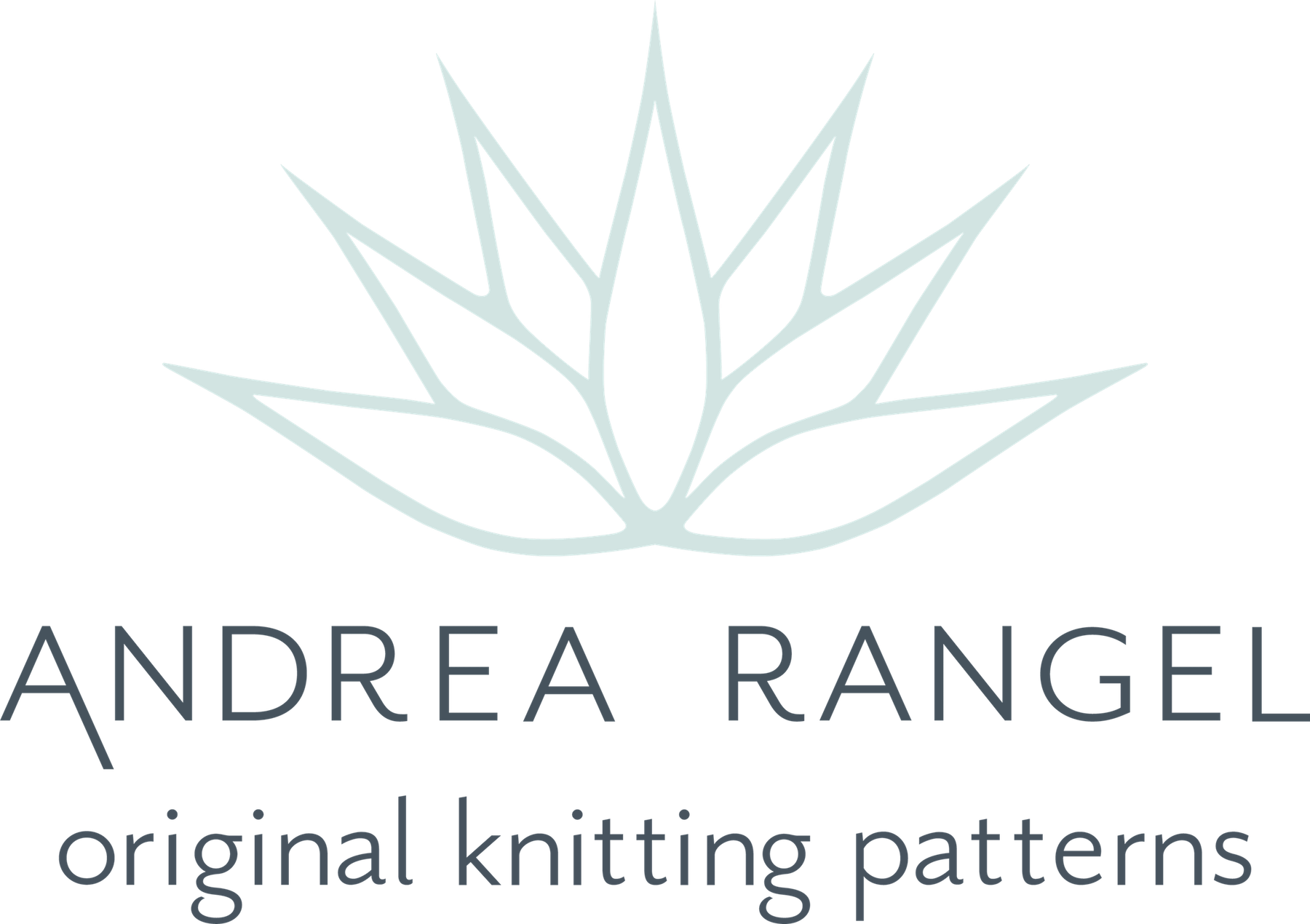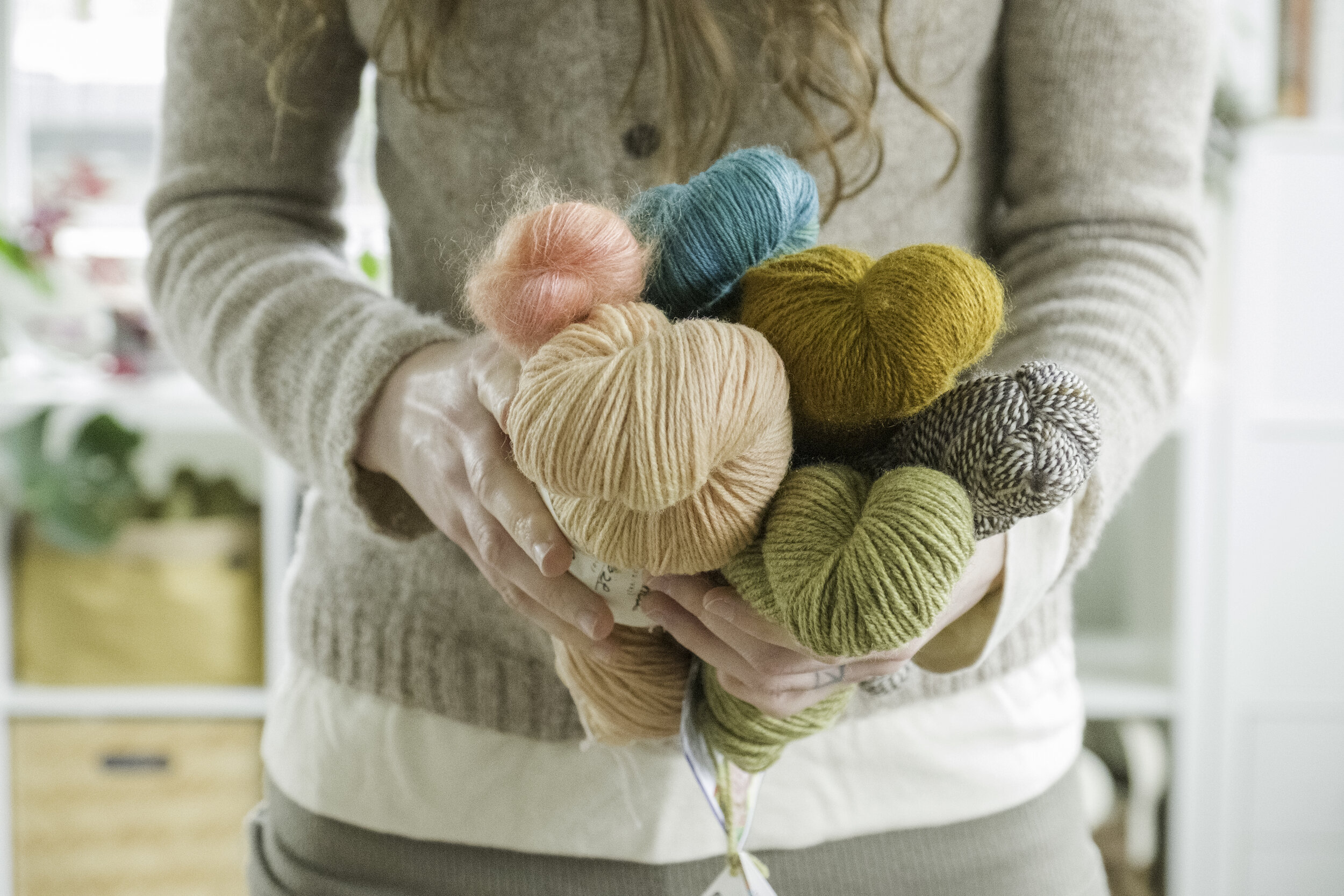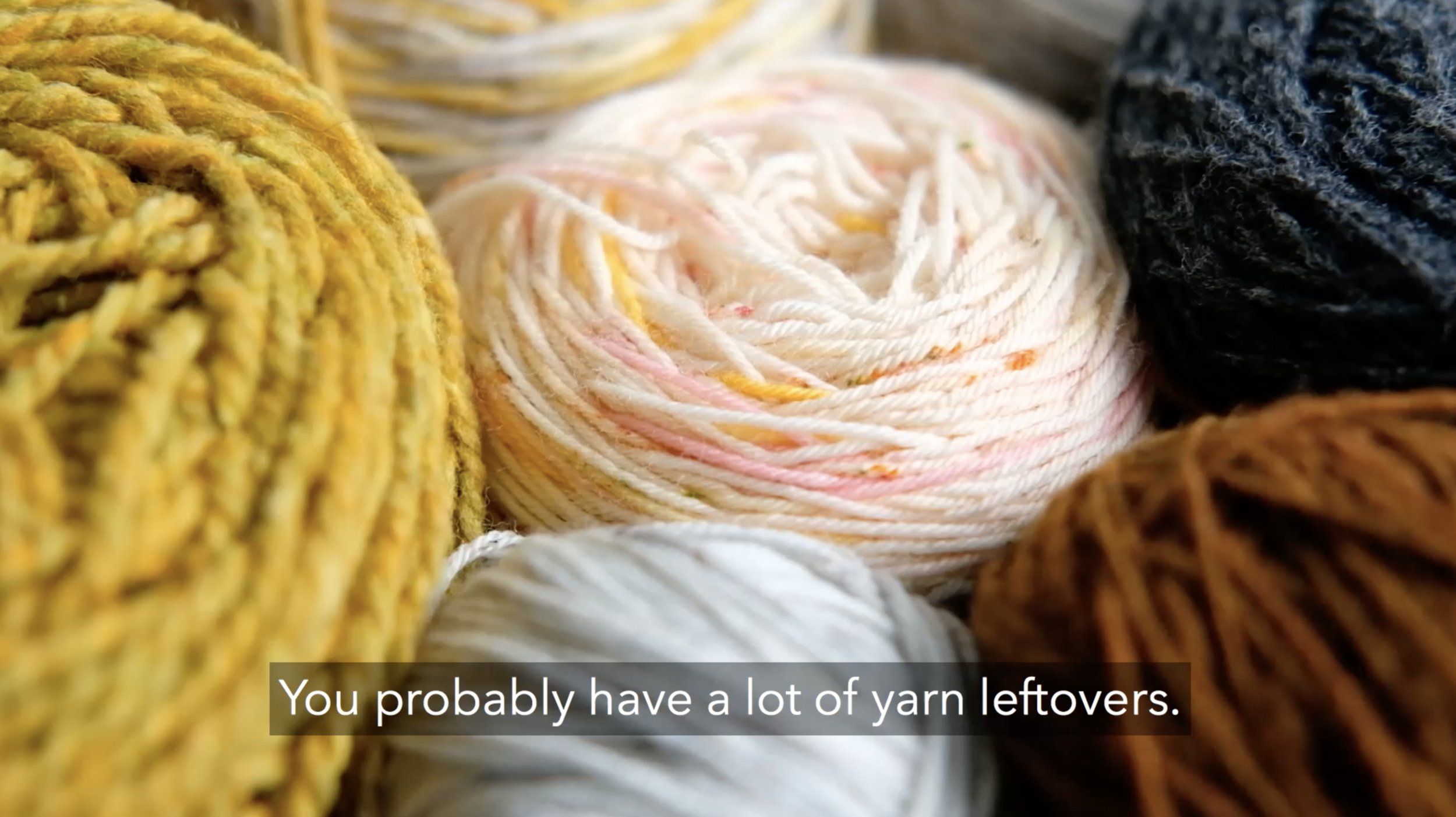6 Steps to Choosing the Right Yarn
Choosing yarn for your project can seem like a really intimidating task because there are just so many options and things to consider! I’ve put together this handy checklist to help get you organized so you can make systematic choices for the best chance of success.
To choose a great yarn for your project, get your pattern in front of you and go through this checklist. Each item on the checklist could seriously be a whole book, so if you’re intrigued, I strongly encourage you to go down that rabbit hole! The purpose of this checklist is to be a helpful reminder for you as you shop.
Remember that just because the designer had a particular intent doesn’t mean you have to follow that, but you’re likely to have a better experience and be more satisfied if you make purposeful choices.
Bright closeup of Andrea’s hands holding a bouquet of yarn skeins. The yarns are shades of pink, brown, toffee, and green.
Checklist
WEIGHT
Find a yarn that’s a comparable weight to what’s called for in the pattern. If the pattern yarn is a worsted, find another worsted; if it’s a fingering, find another fingering. If the pattern doesn’t say a weight but only lists a particular yarn, look up the yarn specified in the pattern to find out more about it. What words like “worsted” and “fingering” mean can vary a lot in practice, so it can be helpful to check the suggested gauge of the yarn listed in the pattern and try to match that.FIBRE CHARACTERISTICS
Find a yarn with similar fibre content to the yarn used in your pattern. Think about the properties of each fibre rather than trying to exactly match the content. If you want to use fibres with different characteristics than what the designer used, consider what impact that will have on your fabric. I recommend diving into Clara Parkes Knitter’s Book of Yarn if you want to learn more about this topic.CONSTRUCTION
Find a yarn that has a similar construction to the one called for in your pattern. Spinning preparation, like woolen or worsted spun, number of plies, and tightness of twist can all make a big difference. If the pattern calls for a chain- construction alpaca blend, don’t try a 3-ply alpaca yarn just because the weight and fibre are the same unless you really want more drape and less elasticity.SWATCH
Once you’ve found a candidate yarn (or perhaps a few candidates), make a large swatch (at least 6 in/15 cm square) in the stitch pattern called for in the pattern and using the needles you expect to use for the project. If the project is in the round, work your swatch in the round. If it’s flat, work a flat swatch. Then wash your swatch and let it dry before evaluating it. If it wants to curl or if it needs to be stretched (like lace), pin it to flatten or open it up. (Here’s a tutorial on swatching in the round if you need more info about that.)EVALUATE YOUR SWATCH
Measure the number of stitches and rows in 4 in/10 cm of fabric. Do this in several places around your swatch to get an accurate measurement. Because your swatch is 6 in/15 cm square, you should always have some space on the edges that you’re not measuring because those edges can be get skewed and mess up your result. Does the gauge you’re getting match the gauge called for in the pattern? If not, switch needles and swatch again until you’re able to achieve the pattern gauge. Hard truth: If you’re not able to achieve pattern gauge, you should probably choose a different yarn unless you just love doing a ton of math to alter a pattern.
Yay you got gauge! Now really look at the fabric. Pick it up and toss it around a bit. Do you like it? Look at the drape and density. Does it behave the way you want your finished project to behave? Is the stitch definition as clear as you’d like? Is it as shiny or as matte as you want? Don’t skip this part because you’re probably going to be spending a lot of time with this fabric, so it’s really important that you actually like it.
Make another swatch in a different yarn. Making many swatches can be the key to a successful project. Even if you’re pleased with your first one, maybe work up another swatch in a different yarn so you can compare the two. You may like the second one even more, and you’ll be educating yourself as a knitter.
Try to practice being okay with it if your first idea doesn’t work out. It hurts to buy a yarn for a specific project and then realize it’s not a good fit, but you’ll be happier with your finished projects in the long run if you can accept the reality that sometimes things don’t work out how we hoped. That yarn will be great for something even if it isn’t the right thing for this project.
LABEL YOUR SWATCH
Label and keep every swatch. I tend to just write this info on the yarn label and then tie it to one of my swatch tails. That way I have the name, colour, and dye lot along with my personal notes. Be sure to list exactly which needles you used, not just size, but brand and style too since the needle material and pointy-ness of the tips can make a big difference in gauge. And write down the gauge so you don’t have to measure it again in the future. Next time you’re thinking of making something, you can pull out your old swatches for inspiration. You may even have one already done that would work for that next project!
Once you’ve made some progress on your actual project, take the time to pause and re-check the fabric to reassure yourself that it’s coming along as expected. Even if you’ve knit a big swatch, things can change once you’ve got the full number of stitches on your needles. I use a mini steamer to relax my work-in-progress fabric so I can check that the gauge is still on track and that I still like the fabric.
The more times you do this, the more familiar you will become with different yarns, fibres, and your own knitting style, and the easier it will get. If you want to get to know some yarns that I’ve knit with, check out my Swatch Project, a database of yarns I’ve reviewed including videos of my swatches.
Two More Things
Before I go, I want to touch on two other ideas that didn’t quite fit neatly into my checklist.
The first is budget. Everybody is in a different place with their finances, so I want to encourage you that there are so many incredible yarns at a huge variety of price points. Yes, many of those expensive yarns are dreamy and totally worth the price given the labour and materials that go into them, but there are so many wonderful more affordable yarns too. I love showing my patterns off in different yarns so knitters can see how well different kinds of yarn can work for the same pattern. Maybe you splurge one day and save the next. That is a hundred percent okay, and as an industry professional I want to encourage everyone in the knitting community to embrace each other’s choices and be that cheerleader for each other regardless of the price of the yarns in the project. Let’s make sure everyone feels welcome! Getting to know yarn by trying out different fibres and constructions will also allow you to make choices about when to go for that pricey yarn and when to stick with the budget option because it might even be a better option for this particular project.
The second is values. It’s worth considering where your yarn comes from and what’s important to you. If you want to support Black-owned businesses, seek them out with purpose, give them your dollars in exchange for that gorgeous yarn, and share their products on your social media. If you have questions for a company, go ahead and ask them. Most have a “Contact” form on their website. If you have the capacity to spend more on yarns that are manufactured thoughtfully and locally, spend that money to keep those businesses going and encourage that business model. If that’s not a possibility for you, consider giving the companies you wish you could shop at a boost on social media by liking and sharing their posts. It’s free and can make a big difference to small businesses.
And don’t forget to shop your stash! You might want to pull some of those precious skeins out just to squish and admire them for a quick mood boost!




